
Ever wondered what makes people like Elon Musk, Ratan Tata, and Simon Sinek stand out? They've all become top experts in what they do, known as thought leaders. And when we think of them, we immediately associate their names with their brand or published books, don't we?
To become a thought leader in business, you must create thought-leader content that shows you know your stuff. You also need to get the right people to see that content, build trust with them, and make them believe in your brand.
It might sound hard but don't worry. This blog will provide tips for creating fantastic thought leadership content and building strong connections with your audience.
Let’s begin!
Sharing your brand's valuable insights and secrets is thought leader content. It is a great way to build strong customer bonds. When brands stop just talking about their products and start solving industry and customer problems, they become thought leaders. It can be communicated via thought leadership blogs or articles.
This shift from selling products to offering guidance builds stronger relationships with customers. When trust is built, price becomes less important. According to Edelman's study in partnership with LinkedIn, thought leadership is the key to gaining the attention of investors, and thought leadership content leads to a 42% increase in lead generation.
Research by Orbit Media Studios dictates that thought leadership content includes three main qualities: expert insights, personal brand, and taking a stand.
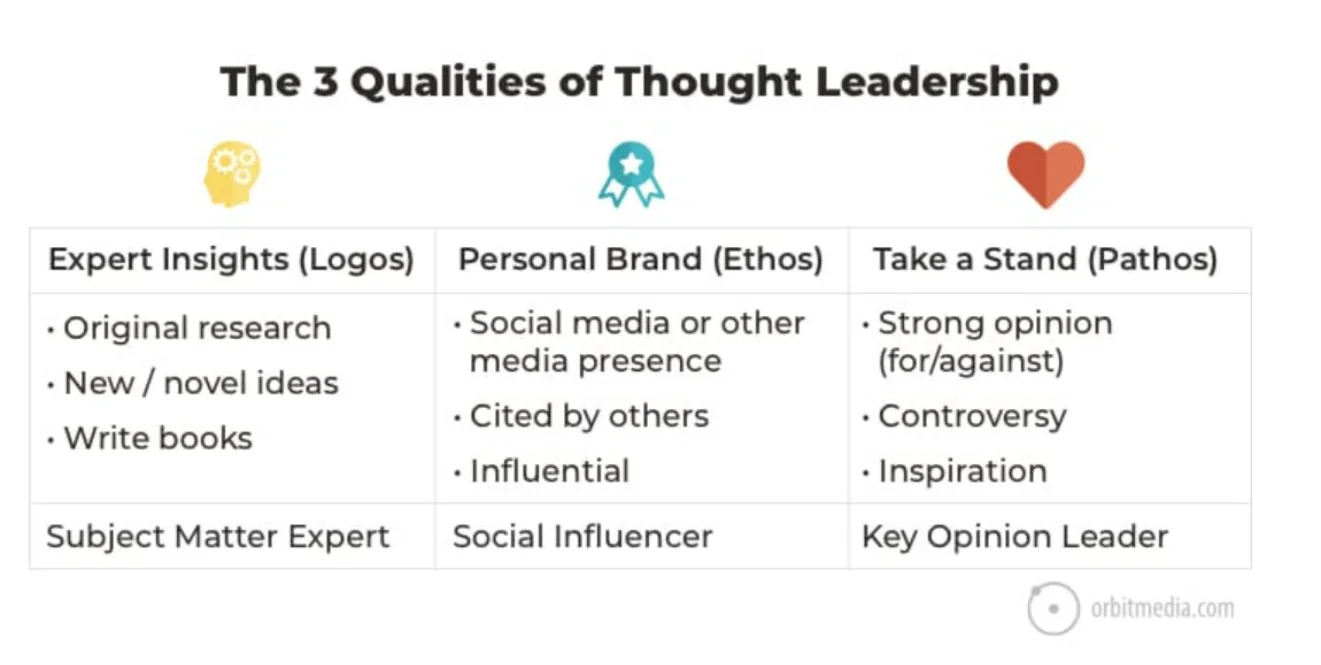
Crafting effective thought leadership content can increase brand awareness, attract qualified leads, and ultimately boost sales. But before we dive in, we should understand three types of thought leader content.
Educational content can become thought leadership content when it offers valuable insights, innovative perspectives, and actionable strategies that challenge conventional thinking or provide solutions to pressing issues in a particular field.

Here are some strategies to transform educational content into thought leadership.
Opinion and commentary content involves expressing subjective viewpoints, interpretations, or analyses on various topics, events, trends, or issues relevant to a particular industry or domain. This type typically reflects the perspective and expertise of the author or contributor and aims to stimulate discussion, provoke thought, or provide insights for the audience.
Opinion and commentary pieces encourage audience engagement through comments, shares, likes, or responses. They allow readers or viewers to express their agreement, disagreement, or additional insights, fostering community or dialogue around the topic.
Here is a thought leadership example of Elon Musk, who is known for his active presence on X, where he frequently shares his opinions, insights, and commentary on various topics related to technology, space exploration, electric vehicles, and, of course, life lessons.
His tweets often significantly impact Tesla's stock price and public perception of the company. His outspoken nature on platforms like X underscores the influence that opinion and commentary content from corporate leaders can have on public discourse and investor sentiment.

Inspirational and visionary content aims to motivate, inspire, and ignite passion among audiences by articulating a compelling vision for the future and conveying a sense of purpose or mission.
This content often communicates an organization’s core values, aspirations, and long-term goals, positioning the company as a leader in its industry and inspiring stakeholders to support its mission.
Here is a thought leadership example of Sir Richard Branson, the founder of Virgin Group, who often delivers keynote speeches. Branson shares insights from his entrepreneurial journey, emphasizing the importance of daring innovation, risk-taking, and relentless pursuit of new ideas.
By inspiring aspiring entrepreneurs to embrace creativity, resilience, and a pioneering spirit, Branson empowers them to challenge the status quo, drive industry disruption, and create positive change in the world.
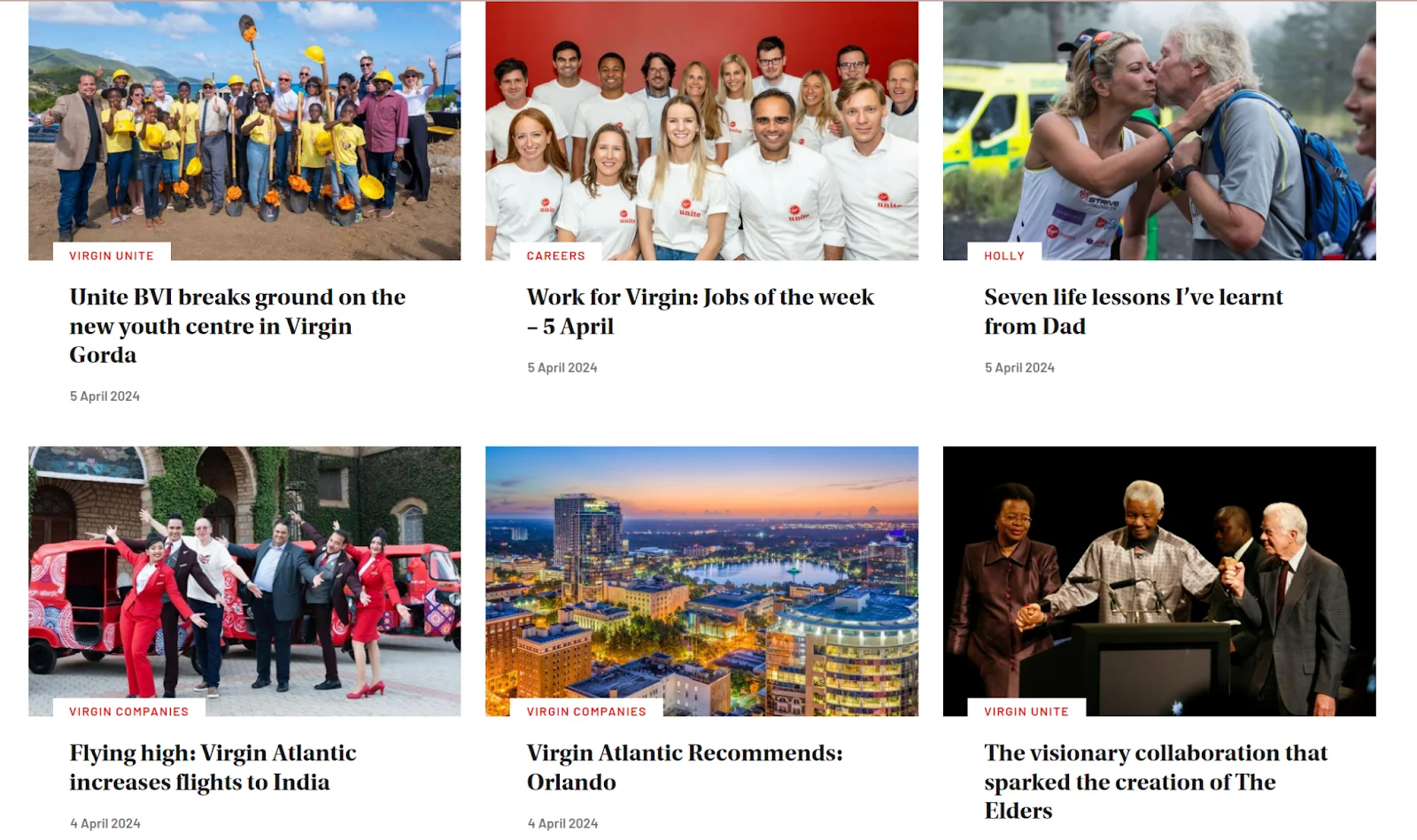
While each audience may require all these types of content at different times, SemRush's research indicates that inspirational content is in the highest demand, comprising 60.9% of audience interest.
Thought leadership articles or blogs aim to go deep by uncovering new trends early. Your go-to tools are Google Trends and BuzzSumo.
Google Trends is a standard for identifying search trends. It helps you explore search queries over time to see what's gaining traction and find topics relevant to your niche.
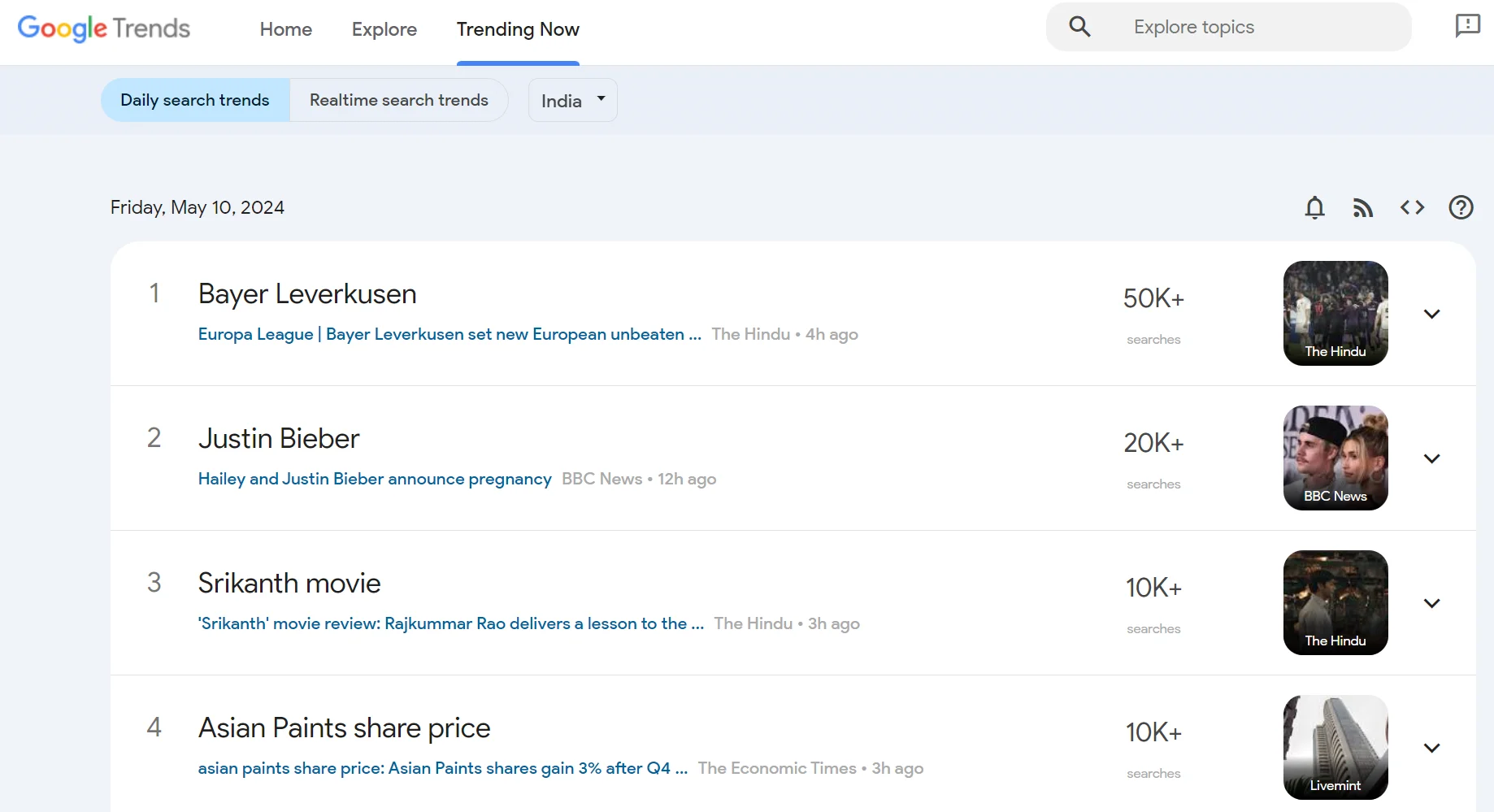
BuzzSumo offers a "Trending Now" feature showcasing trending content across various industries. It also allows you to analyze what content performs best on social media for specific topics.
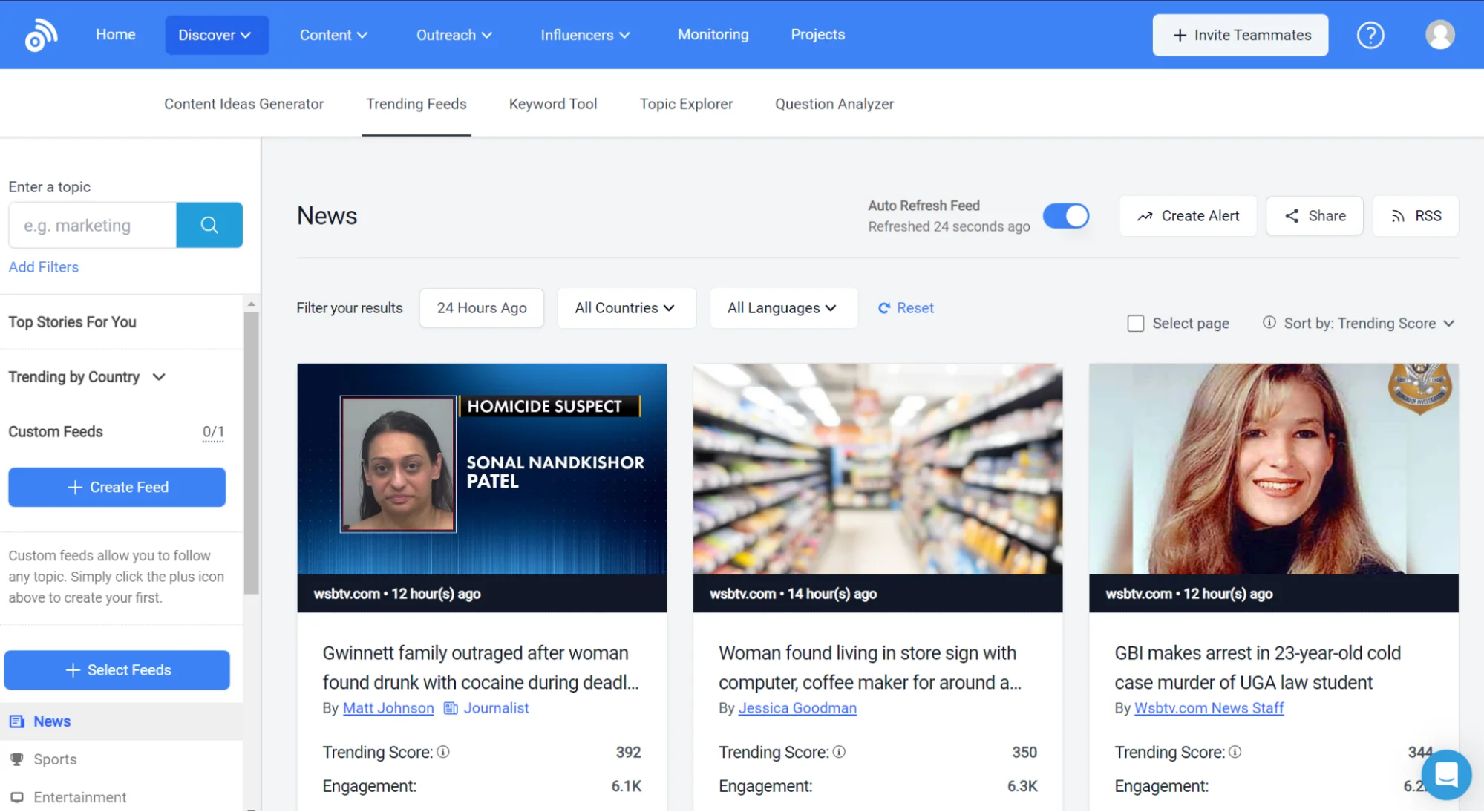
Other tools, such as Exploding Topics, Ahrefs Content Explorer, and Semrush Trends, help you analyze customer behavior, social media chatter, and market shifts, giving you a heads-up on what's coming next.

Online forums like Reddit and Quora are treasure troves of valuable insights. By exploring these platforms, you can tap into niche questions and emerging trends ripe for exploration.
Reddit, with its vast array of subreddits covering virtually every topic imaginable, provides a platform for users to ask questions, share experiences, and engage in discussions. Similarly, Quora offers a space for users to post questions and receive answers from a diverse community of experts and enthusiasts.
When using these forums:
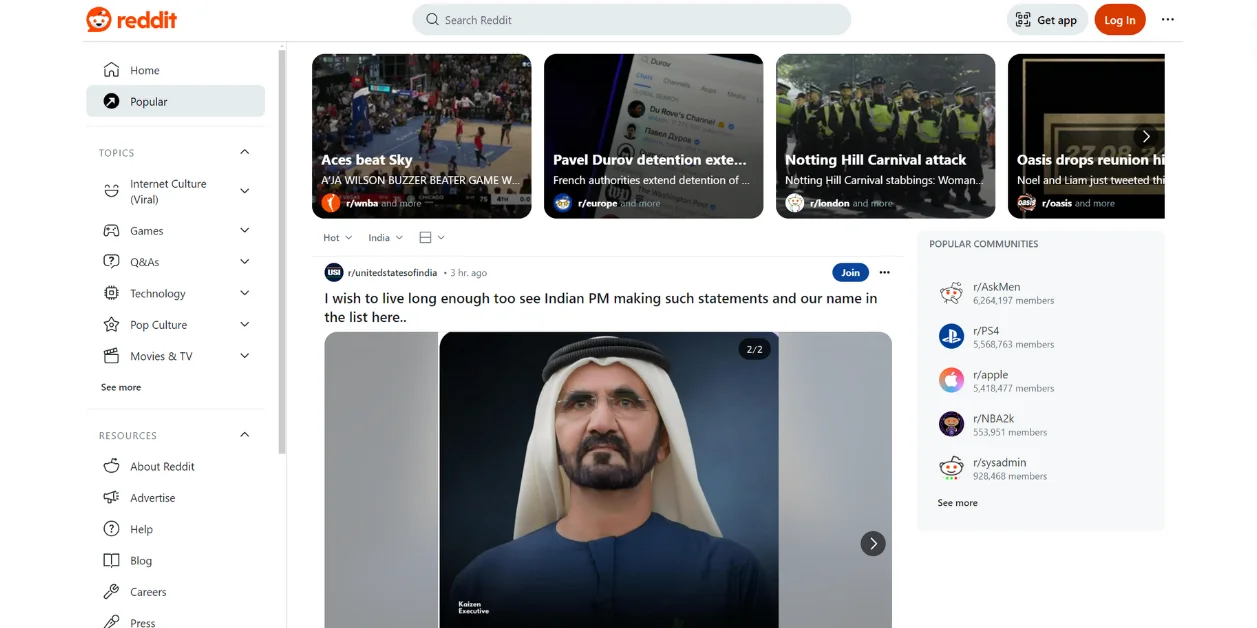
Competitor analysis isn’t just about monitoring others’ actions. By examining your competitors’ conversations more closely, you can uncover gaps in the conversation and identify areas where you can stand out.
Here are a few steps on how you can analyze your competitors.
Step 1: Start by examining your competitors' content, whether thought leadership blogs, whitepapers, social media updates, or webinars.
Step 2: Look for recurring themes, common pain points, and popular discussions within your industry.
Step 3: Pay attention to the questions your competitors are answering. Are there any topics they're overlooking or only scratching the surface of?
Step 4: Dive deeper into these areas to provide more comprehensive insights and position yourself as the go-to expert.
Step 5: Analyze the engagement metrics—likes, shares, comments, etc., on your competitors' content. What resonates most with their audience? Are there any untapped opportunities for engagement or discussion?
Step 6: Lastly, monitor industry trends and developments. Are your competitors staying ahead of the curve, or are there emerging topics they still need to address?
By staying proactive, you can foresee what your audience wants to know next and deliver timely, relevant thought leadership content.
Partnering with a professional content writing company like LexiConn can enrich your thought leadership efforts. We can help to find the right topic that suits your industry and speaks to your audience.
Here's how LexiConn empowers you to create impactful content:
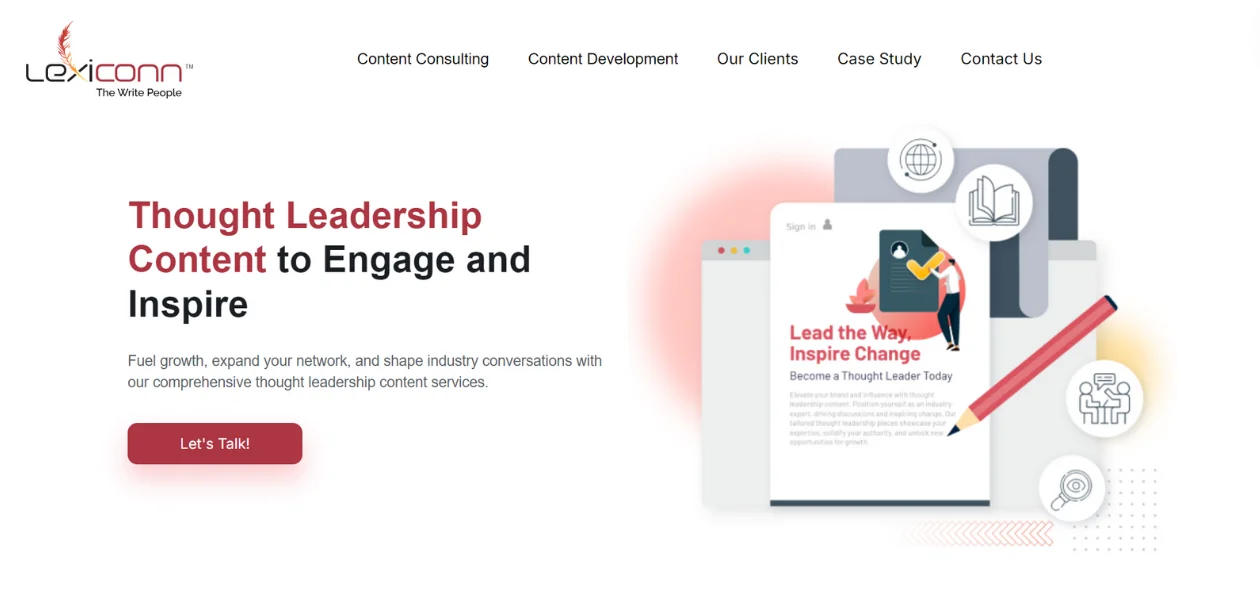
The world of thought leadership is no stranger to innovation. AI and machine learning are rapidly transforming how we create and distribute thought leadership content.
While ChatGPT and Gemini are common AI tools for generating ideas and drafting content, human expertise remains essential. Crafting a truly impactful piece requires strategic direction, nuanced analysis, and a unique voice that AI cannot replicate.
Let’s explore how these technologies are changing the game.
Thought leadership is frequently mistaken for content marketing. While content marketing encompasses various strategies to attract, educate, and engage potential customers, thought leadership is a specific approach within content marketing.
For instance, a company shares valuable content to explain complex terms and concepts without introducing groundbreaking ideas. Another company might create entertaining or humorous content. While both are valid content marketing strategies, neither qualifies as thought leadership content.
Thought leadership content goes beyond simply providing information; it’s about offering innovative insights about your industry, positioning yourself as a trusted authority, and guiding relevant discussion.
So, while content marketing is broad and diverse, thought leadership content is a focused strategy to establish credibility and influence.
Here are some insights on how you can start marketing your brand as a thought leader.
Instead of broad industry overviews, thought leadership is moving towards niche expertise. To understand your niche, begin by evaluating your skills, knowledge, and experiences.
Next, understand your target audience’s needs, challenges, and pain points.
Adapt your niche to address these specific needs and provide valuable solutions that connect with your audience.
Finally, ensure your chosen niche aligns closely with your brand values and mission. Your niche should reflect your brand’s core principles and beliefs, allowing you to authentically represent your brand while positioning yourself as a thought leader.
Social media is a goldmine for thought leaders looking to get their message out there. Platforms like LinkedIn, X, and Instagram give you the chance to show off your expertise, connect with your audience, and become a go-to voice in your industry.
Being honest and consistent in your interactions can build a loyal following and boost your influence within your niche.
Pro Tip: Attention spans are shrinking, and audiences crave bite-sized information. Microcontent formats like short videos, infographics, and social media posts are becoming a powerful tool for thought leaders. |
Here is an example of a thought leader, MarketingHarry, who uses Instagram to share smart tips and ideas about marketing products.
Create valuable and insightful content that highlights your expertise and offers solutions to your audience’s challenges. Diversifying the types of content you produce is essential for reaching a broad audience. Whether you write thought-provoking articles, make informative videos, or run engaging social media campaigns, it’s about giving your audience what they want.
Ask yourself these questions before you decide where to put your content:
For example, if you’re a fitness brand trying to connect with millennials, fun Instagram reels or quick workout routines grab their attention and get them involved. However, if your audience is older, longer explainer videos on YouTube or informative blog posts with clear visuals might be a better fit.
You might also consider placing content on platforms frequented by older demographics, like Facebook groups dedicated to healthy living or online newsletters for seniors.
Pro tip: Intuition and anecdotal evidence are no longer enough. Thought leaders use data-driven insights to support their claims and present a more persuasive argument. |
Keeping an eye on your content’s performance is crucial for improving it. You can see what’s working and not working by examining website traffic, email open rates, and social media likes and shares.
This helps you make smart decisions about what to do next. Analyzing your competitors’ performance can also give you great ideas for standing out from the crowd.
Here’s how you can perform content performance analysis:
Website Traffic
Engagement Metrics
Email Marketing
Competitor Analysis
Remember not to get bogged down in vanity metrics! While likes and shares are great, focus on metrics that align with your content goals.
Being real and honest with your audience is key to being a successful thought leader. Sharing your experiences and passions alongside your professional knowledge helps you build trust and connect with your audience on a deeper level.
Whether it's through telling stories, being open about your struggles, or just showing how much you care about what you're talking about, authenticity sets you apart and makes people want to listen to what you say.
|
Pro Tip: Partner with organizations that align with your mission to gain valuable insights. Authentic action speaks volumes! |
Through thought leadership, you're not just sharing knowledge—you're shaping the future of your industry. With the right strategies and dedication, you can carve out your space as a trusted authority, influencing and inspiring others. So, are you ready to make your mark?
Remember, success in thought leadership content isn't just about what you know—it's about how you share it. So, be bold, be authentic, and above all, be ready to make a difference.
LexiConn specializes in crafting compelling content that connects to your audience and establishes you as a leader in your field. With our expertise and tailored approach, we'll help you develop thought-provoking content that captures your expertise and vision. Whether you need thought leadership articles, blog posts, whitepapers, or social media content, we deliver high-quality, engaging material that drives results.
Contact us today to learn more about how we can support your thought leadership journey and help you achieve your goals. Unlock your potential with LexiConn!
Check out our website at www.lexiconn.in or reach out to us at [email protected]. LexiConn also offers a free 30-minute consultation to help you develop your content strategy.



I have read and accept the Privacy Policy
Read More